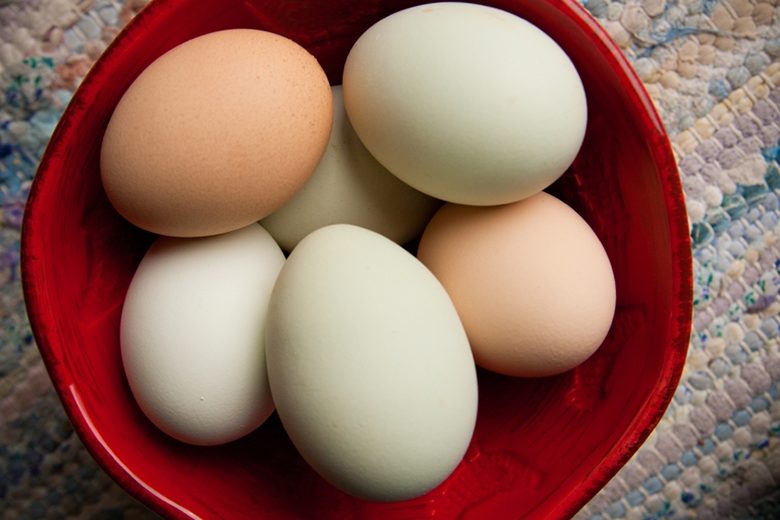
While shell and yolk color may differ between chicken eggs, the difference in color bears no relation to the flavor, nutritional value or quality of the egg. The egg’s size and shell color is determined by the breed of the hen.
For example, the Leghorn lays large, pearl-white eggs while Rhode Island Reds lay eggs that are medium to dark brown and are larger than the average-size egg on the market.
When it comes to yolks, the color is determined by a hen’s diet, not its breed (artificial color additives are not permitted in eggs) or the freshness of the egg. Hen diets heavy in green plants, yellow corn, alfalfa and other plant material with xanthophylls pigment (a yellow-orange hue) will produce a darker yellow-orange yolk. Diets of wheat or barley produce pale yellow yolks; hens fed white cornmeal produce almost colorless yolks.
Free-range hens may have access to more heavily pigmented food so they may produce eggs with darker yolks. According to the American Egg Board, consumer preference in the U.S. is typically for light gold- or lemon-colored yolks.
